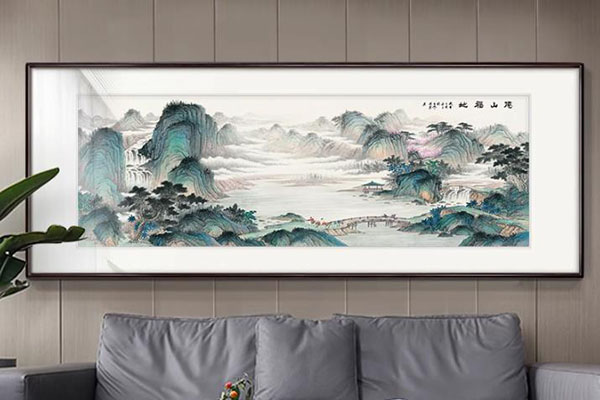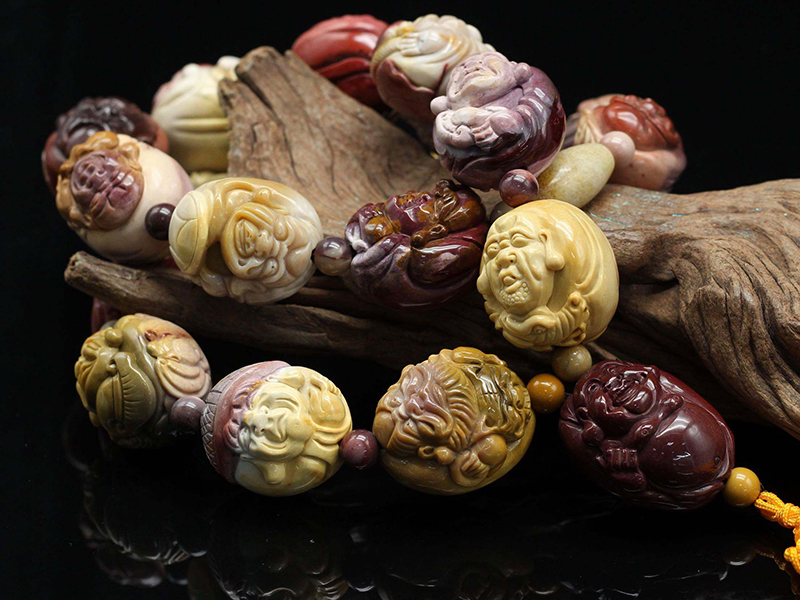Feng Shui, the ancient Chinese art of harmonizing energies in living spaces, has gained popularity worldwide for its potential impact on well-being and success. While some may be skeptical about Feng Shui, it’s hard to deny that our surroundings influence our lives. From the layout of the living room to the colors in the kitchen, there are essential Feng Shui principles that can help us create a balanced and prosperous home. In this blog, we will explore the Feng Shui hanging paintings in the study and living room.
Feng Shui for the Study:
Peony Paintings:
Peonies, the national flower of China, symbolize wealth and auspiciousness, making them popular choices for home decor. When placing peony paintings in the study, it is best to choose the northern or southern directions. The northern direction represents “water” in Feng Shui, and water nourishes wood, symbolizing prosperity. On the other hand, the southern direction represents “fire,” and wood enhances fire, signifying growth and abundance. Avoid placing peony paintings in the western direction, which represents “metal” and may weaken the wood element. Peony paintings are ideal for the living room and bedroom as well.
Soaring Eagle Paintings:
Soaring eagle paintings are often hung in the study and living room, representing progress, ambition, and high aspirations. When hanging these paintings, remember that the eagle’s “beak” should not point towards anyone’s head. Hence, avoid placing them above sofas or chairs.
Playful Fish Paintings:
In Feng Shui, “water” is associated with wealth, and fish symbolizes abundance and prosperity. Paintings of two fish playing in the water, known as the Double Fish motif, are highly suitable for the living room, especially when hung at a 45-degree angle to the main entrance. This position corresponds to the “wealth position” and is believed to attract prosperity. Calligraphy is often used in Feng Shui to ward off negative energies, such as a bedroom door facing the main entrance. Hanging a scroll with auspicious calligraphy can deflect negative energy and enhance positive vibes in the room.
Smooth Sailing Paintings:
Avoid hanging smooth-sailing paintings in the southern direction due to the clash of elements. Also, ensure that the waves beneath the boat do not point toward doors or windows. Mountain and water landscape paintings should be carefully placed, preferably on the left side of the room (from the entrance). Such paintings can also be hung behind the desk to provide support and attract helpful connections. They are suitable for the living room, meeting rooms, and offices.
Lotus Flower Paintings:
The lotus flower represents purity, resilience, and enlightenment. It is an auspicious symbol in Feng Shui, often associated with spiritual growth and positive energy. Lotus flower paintings are suitable for living room, meeting rooms, and bedrooms, especially for those who follow Buddhist beliefs, as they also symbolize completeness and goodwill.
Bamboo Paintings for Peace and Progress:
Bamboo symbolizes strength, flexibility, and modesty. It is often associated with the virtues of a true gentleman. Bamboo paintings are believed to bring peace and harmony, making them an ideal choice for the study. They are also associated with good health and are considered auspicious for elderly family members.
Conclusion:
Incorporating Feng Shui principles into your home decor can create a harmonious and positive environment. When it comes to hanging paintings in the study and living room, paying attention to symbolism, direction, and element interactions can enhance the flow of energy and attract prosperity. Remember, Feng Shui is not just about superstition but about creating a space that nurtures your well-being and supports your goals. So, why not give it a try and see the positive changes it brings to your home and life?





